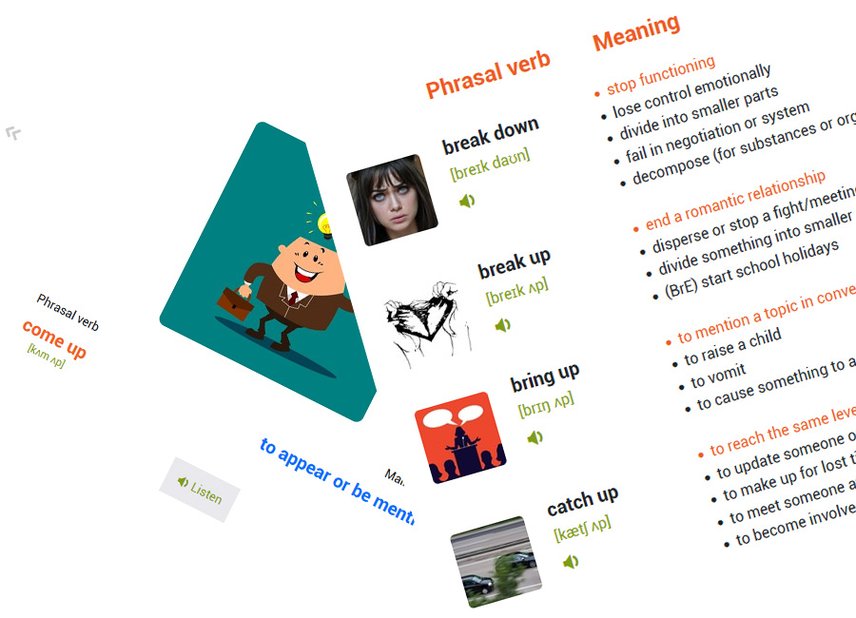Why Phrasal Verbs Are the Key to Natural English
Phrasal verbs are like spices in the English language. Without them, speech can sound flat — with them, it comes alive.
If you've ever heard someone say “make up,” “get over,” or “give in” and weren’t quite sure what they meant, you’re not alone.
There are thousands of phrasal verbs in English, and many have multiple meanings depending on context. For example:
- “Take off” can mean to remove clothes, for a plane to leave the ground, or for something to become suddenly successful.
- “Break up” can mean to end a relationship, to break into parts, or even to lose connection during a call.
Why learn phrasal verbs?
- Understand native speakers — They use phrasal verbs constantly in everyday speech.
- Speak naturally — Mastering them brings you closer to fluent, idiomatic English.
- Pass exams and interviews — Phrasal verbs are useful for TOEFL, IELTS, and real-life communication.
How VerbsUp helps you learn them
At our phrasal verbs page, you’ll find:
- Difficulty levels (from A1 to B2)
- Audio pronunciation
- Clear meanings with real-life examples
- IPA transcription for accurate pronunciation
You can explore each phrasal verb individually, mark favorites, and (coming soon!) test yourself with quizzes.
Tips for learning phrasal verbs
- Don’t memorize long lists — Focus on context and examples.
- Compare with your native language — Many phrasal meanings are surprisingly similar.
- Listen to English — Spot phrasal verbs in podcasts, shows, and videos.
- Use them — Try building sentences and using them in speech or writing.
Start now
Visit the Phrasal Verbs page, pick 3–5 phrasal verbs you didn’t know, listen to them, read examples, and create your own sentences. That’s real progress.

